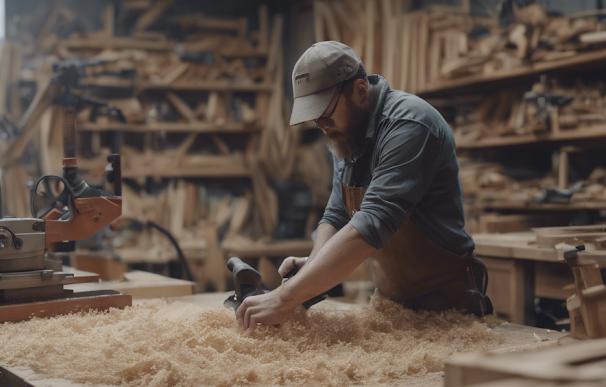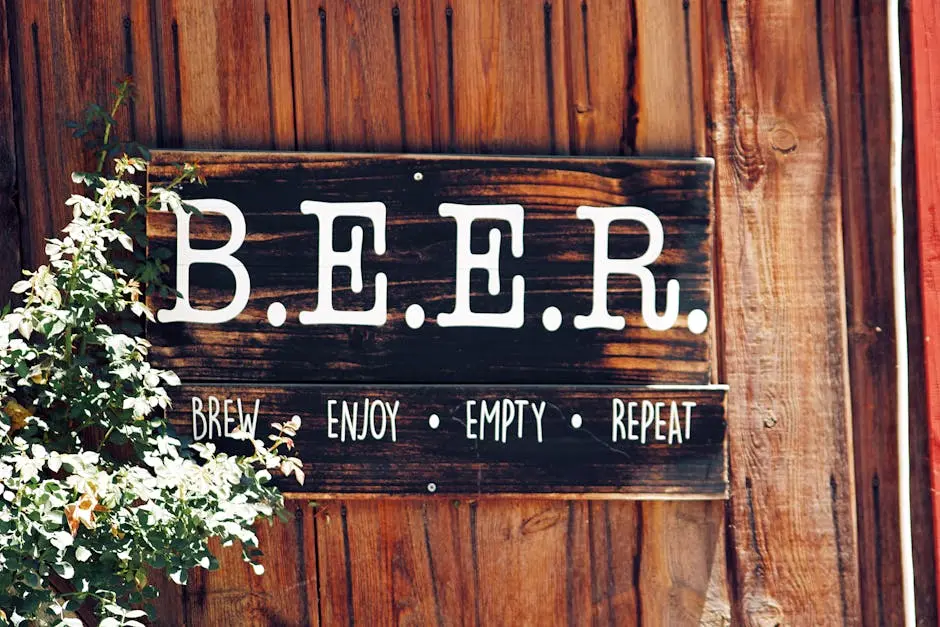Creating custom camp signs is not just a craft; it's a journey that begins in the heart of the forest and concludes at your front door. In this blog, we will explore the intricate process of designing and making rustic camp signs, emphasizing the importance of personalization and craftsmanship. Whether for a cabin retreat, a backyard campsite, or a thoughtful gift, these signs capture the spirit of adventure and connection with nature.
Understanding the Appeal of Rustic Custom Camp Signs
Rustic custom camp signs encapsulate a sense of nostalgia and connection to nature that resonates deeply with many. The allure of these signs lies not just in their physical form but in the stories they tell. Each sign is a beacon of adventure and warmth, inviting friends and family to share experiences created under the open sky. Far from mass-produced decor, custom camp signs uniquely represent personal style, showcasing individual names, locations, or heartfelt messages crafted and engraved with care.
Moreover, these signs can evoke lasting memories of camping trips, family gatherings, or peaceful retreats into the wilderness. The ability to tailor a sign specifically to your liking fosters an intimate bond between the creator and the final product. Whether it displays a beloved quote, coordinates of a favorite campsite, or whimsical graphics, each creation captures the spirit of outdoor adventures. Consequently, many campers and outdoor enthusiasts opt for these personalized pieces as charming additions to their camping setups or as decorative artifacts at home.
In essence, rustic camp signs symbolize more than directional markers; they embody individual journeys, create a welcoming atmosphere, and remind them of the simpler, adventurous times spent in nature's embrace. Thus, as we delve deeper into the intricacies of crafting these unique items, let us explore the significance of the materials used, the design process, and the techniques that bring these camp signs to life.
Materials: Sourcing the Best for Your Sign
Choosing suitable materials is a foundational step in creating custom wood signs. Quality wood, such as Western Red Cedar, is the quintessential exterior sign material. It provides not only aesthetic appeal but also durability against the weather elements. Each type of wood carries unique characteristics, like grain patterns and color variations, which add to the overall charm of the sign. For example, Western Red Cedar is often favored for its decay resistance and natural aromatic properties (not to be confused with Eastern Red Cedar, the closet, and Hope Chest incense-like variety, making it ideal for outdoor signage.
Additionally, considering the signage's intended environment is crucial. If the sign will be exposed to moisture or direct sunlight, selecting materials that can withstand these conditions will extend its life. Utilizing natural oil-based finishes protects the wood while maintaining its rustic look. Beyond wood, incorporating elements like metal, stone, or glass can elevate the sign’s design and functionality. These materials can introduce different textures and tones, creating a multi-dimensional visual appeal that captures attention.
Once the primary materials are chosen, consider engaging with local suppliers or artisanal markets to find unique components that may elevate your sign's character. Sourcing reclaimed wood embodies eco-conscious practices and adds a story behind the sign, making it even more special. By thoughtfully selecting materials that resonate with your personal story, you will enhance the sign's emotional connection with its surrounding environment.
Designing Your Custom Camp Sign: Tips and Inspiration
The design phase is where your creative vision begins to actualize. Start by considering the purpose of the sign. Is it purely decorative, or will it serve a functional role, marking a campsite or welcoming guests? The message you wish to convey dictates much of the design process. Incorporate elements like fonts, images, and graphics that resonate with the outdoor theme and your personal style. Hand-drawn lettering can evoke a rustic feel, while more polished fonts may present a contemporary touch.
Inspiration can be drawn from various sources, including nature itself. The surrounding landscapes, flora, and fauna can inspire creative elements to include in your design. For instance, if you frequently camp near a lake, incorporating wave patterns or images of fish can be highly thematic. Additionally, don’t shy away from searching online for design templates or visiting craft stores for ideas. Platforms like Pinterest and Instagram offer a plethora of visuals that can ignite your imagination.
Sketching your ideas on paper allows you to visualize spatial arrangements and refine the details before committing. This is also a great time to experiment with styles and elements to find the right combinations. Just as importantly, consider that when taken outdoors, your sign project becomes much smaller against the scale of all outdoors. Make a cardboard shape you imagine (Or simply a rectangle) in the size you are considering, take it outside where you want it displayed, and back up 20 or 30 feet to appreciate how easily it would be to make your project too small to be readable. Involving family members or fellow campers in the brainstorming process can garner fresh perspectives and make the end result more meaningful, reflecting the collective spirit of your adventures.
Crafting Techniques: From Concept to Creation
After solidifying your design, the next step involves translating your vision into a tangible sign. Start by cutting the wood to your desired dimensions, ensuring proper safety measures when handling tools. Precision in measurements guarantees a polished final product. Sanding the wood edges smooths out splinters while enhancing the sign’s overall aesthetic appeal, preparing it for painting or staining.
Those who prefer a hands-on approach should use stencils or templates to replicate lettering or intricate designs. This method facilitates consistency across each letter and element, adding to the professional appearance. Another technique involves wood-burning, which can provide a rustic charm and deep texture. Dabbing with paint or applying natural dyes can add that extra dimension and character, capturing the essence of the great outdoors.
Moreover, assembling the pieces of your sign may require an understanding of woodworking joinery, depending on the complexity involved. Using screws, wood glue, or other fasteners will ensure longevity while maintaining a rustic aesthetic. Consider how they blend seamlessly into the overall design if you’re incorporating additional materials such as metal brackets or chains. Following through these crafting techniques with care can transform a simple idea into a stunning centerpiece for your camping experiences.
Finishing Touches: Sealing and Preserving Your Sign
Once your sign is complete, the finishing touches are critical in enhancing its longevity and beauty. Applying a sealant designed for outdoor use helps protect against environmental damage, including moisture, UV rays, and temperature fluctuations. Choose between clear varnishes that preserve the natural look of the wood or colored stains that provide additional shades while offering protection. Each product contributes differently to the final appearance and durability, making this step essential in sign-making. Consider reviewing our Care and Feeding Article
It’s also an excellent opportunity to reflect your style; perhaps a matte finish suits your aesthetic, or a glossy coat adds that extra sheen you desire. Allowing ample time for drying is crucial; impatience can lead to smudges or incomplete finishes that jeopardize the entire craftsmanship effort. Once perfected, think about how to best position or hang your sign to ensure it is visible yet harmonizes with its setting.
Lastly, regular maintenance will keep your custom camp sign looking vibrant. Cleaning the surface occasionally and reapplying sealant as needed keeps the colors fresh and materials intact. As you continue to enjoy your adventures, remember that your sign will remain a testament to your creativity and connection to nature, proudly displayed at your home, welcoming guests, or standing sentinel at your campsite.
Showcasing Your Rustic Camp Sign at Home
With your custom camp sign now complete, it’s time to showcase it in a way that reflects its story and significance. Many enthusiasts display their signs prominently in their homes or outdoor setups, ensuring they become a conversation centerpiece. A well-placed sign in your backyard can create a charming atmosphere for family gatherings, and positioning it near the entrance of a cabin can enhance the welcoming feel of your retreat.
To elevate its presence, consider adding complementary outdoor decor, such as lanterns, plants, or rustic furniture, which can frame the sign beautifully. If you have a theme – say, a vintage camping display – allow your sign to harmonize with other elements to enrich the overall aesthetic narrative of your space. Displaying the sign alongside photographs of cherished moments shared around the campfire adds a heartfelt touch that resonates with everyone who visits.
Moreover, digital sharing of your custom camp sign can inspire others to embark on their crafting journey. Showcasing photos on social media platforms entails displaying the final product and sharing the creative process, from sourcing materials to crafting and design decision-making. Communities of fellow campers and artisans are often thrilled to see innovative interpretations of outdoor decor, fostering inspiration and connection. Ultimately, your rustic camp sign tells a story—it’s not just about you but the adventures and memories it evokes for everyone who comes across it.
Bringing Nature Home
The journey of crafting rustic custom camp signs is both fulfilling and expressive. Each sign tells a unique story, reflecting individual styles and the essence of the great outdoors. As you embark on your sign-making adventure, remember that combining natural materials and personal touches makes all the difference. Transform your creative vision into reality and directly bring a piece of the forest to your home.
May the Forest Be With You!












